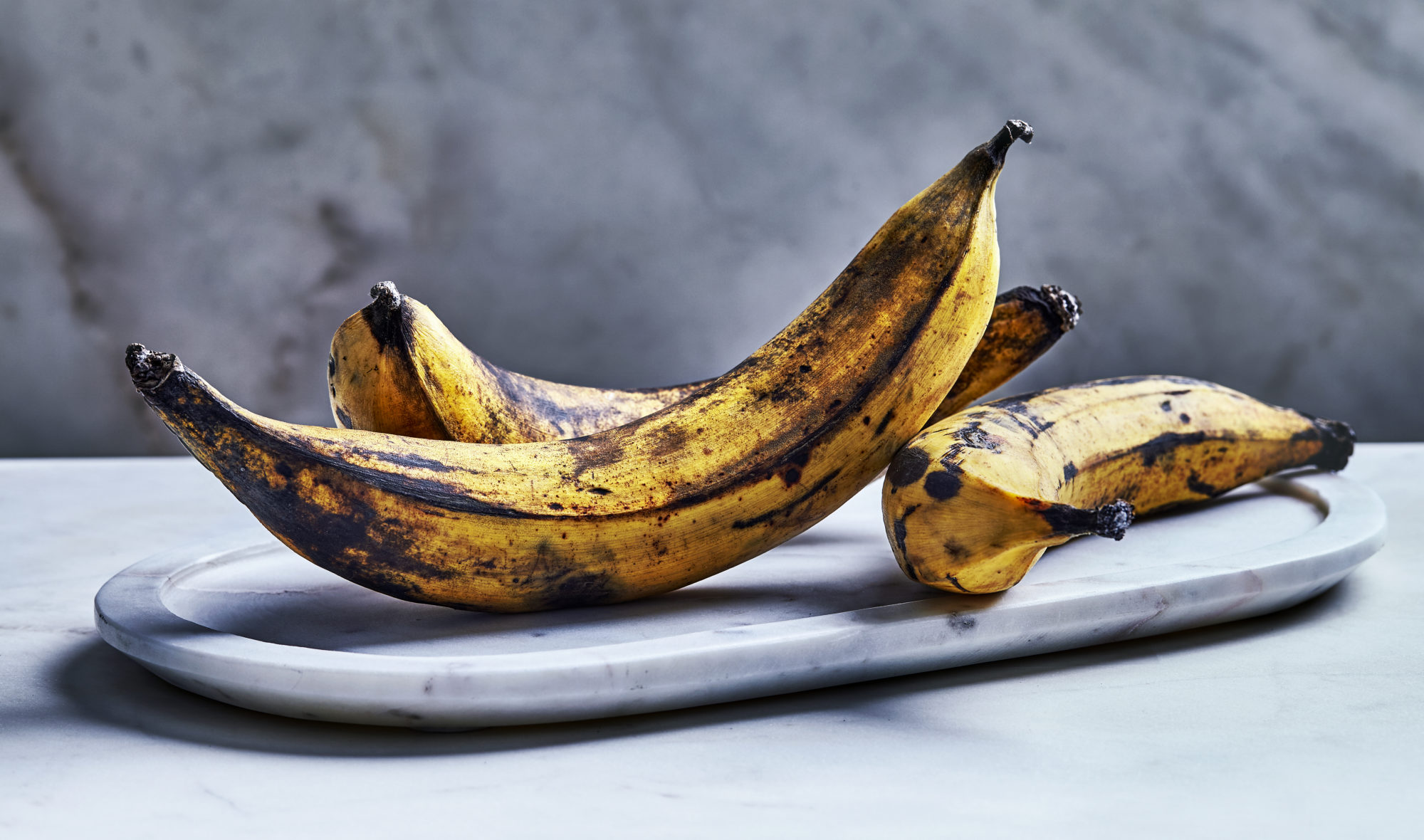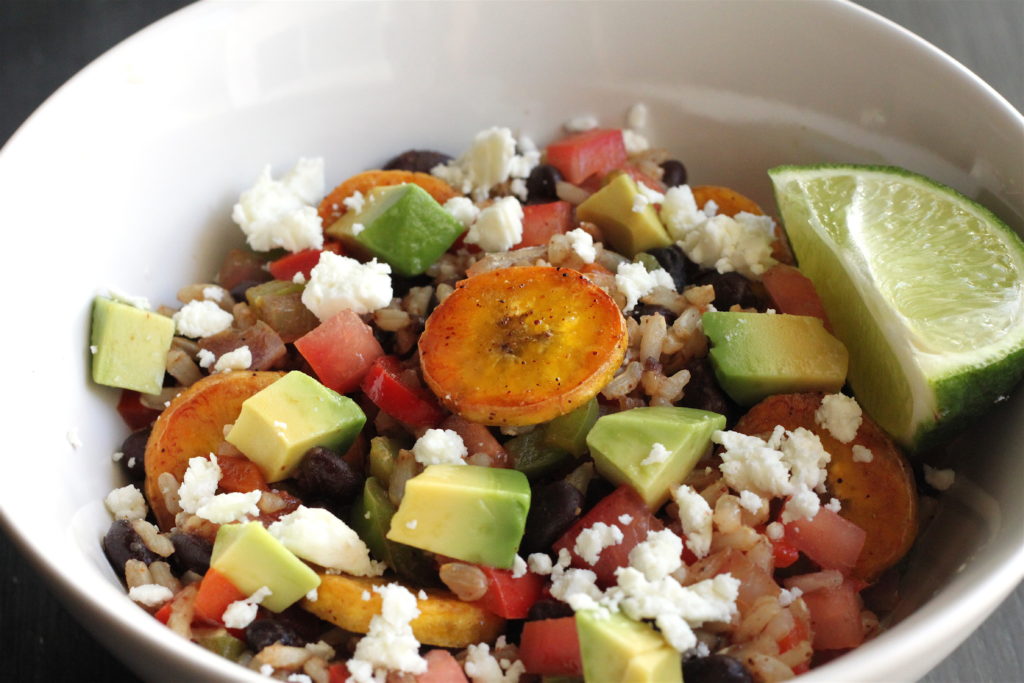Plantain


Plantains are more than just an oversized replacement for a banana. Because they are eaten at all stages of ripeness (green through black), plantains are very versatile: Green plantains are starchy and potato-like, whereas as ripe plantains are soft and sweet and will taste more like a conventional banana. Unlike bananas, plantains are typically eaten cooked, often either fried or boiled. Depending on their ripeness, plantains will also vary nutritionally, the major difference being that ripe plantains will be higher in sugar, and green plantains will be higher in starch. This starch that green plantains contain in abundance is known as resistant starch, which is a type of fiber that promotes digestive health. Meaning: Eating plantains will make both your mouth and belly happy.
The plantain is a fruit with two faces.
The first face is presented in the very early stages of ripeness, when the skin of the fruit is green and the flesh inside is tough and starchy. The second face comes weeks later, after the skin turns from yellow to spotted to black, and inside the starches convert to sugars and the fruit becomes soft.
Most importantly, both faces are delicious.
Plantains are quite obviously related to bananas (obvious because plantains just look like big bananas), except unlike bananas, plantains are typically eaten cooked. Particularly in the early stages of ripeness (when the peel is green) plantains also have more starch and less sugar than a banana.
Plantains are native to Southeast Asia and Australia and they are a dietary staple in Africa, Central America, coastal South America, and the Caribbean islands. In these regions they are often served fried into chips or in thick slices, or boiled.
Depending on the stage of ripeness, a plantain will go through various permutations of appearance, texture, and flavor.
A green plantain is very firm and typically requires a knife to peel. Inside, the fruit is pale yellow and must be cooked in order to be eaten. Once cooked, green plantains have a dense starchy texture and a flavor similar to potatoes, with a subtle hint of banana.
A ripe plantain is nearly entirely black, and while it still holds its shape, it is very soft. As it ripens, the skin thins and becomes easier to peel, and the fruit inside sweetens and darkens to a light peach color. Ripe plantains can be eaten raw, although in the cultures where they are most popular, they are still typically cooked. At this stage, plantains will be soft and taste much more like a conventional banana. Due to the sugar content, a ripe plantain, when fried, will caramelize and produce the most wonderful flavors.
Just as the appearance and flavor of a plantain changes depending on the stage of ripeness, so too will the nutrition.
One cup of green plantains, fried in oil (about 118g) has 365 calories, 1.8g protein, 13.9g of fat, 58g of carbohydrates, 4.1g fiber, and 4.3g sugar.
One cup raw, ripe plantain (about 148g) has 181 calories, 1.9g protein, 0.6g of fat, 47.2g of carbohydrates, 3.4g fiber, and 22.2g sugar.
Plantains are a good source of vitamin B6 (pyridoxine), and in their raw form, vitamin C. Green plantains are also rich in resistant starch, a type of fiber that benefits gut health.
Depending on where you are, plantains may be sold on every street corner, or, if you are in North America, perhaps only at larger grocery stores or specialty ethnic stores.
Plantains are available whole, and they are also commonly found packaged as chips. In the latter case, read the ingredients and choose packages with little more than plantain, oil, and salt as ingredients.
When buying plantains whole (which is likely the most wholesome way to consume them), consider the ripeness you desire. If you want green plantains, choose specimens that are firm and evenly green. If you want yellow plantains, choose specimens that yield to gentle pressure when squeezed, and have a bright yellow peel, perhaps with some brown or black spots. If you want ripe plantains, choose specimens that are evenly dark brown to black and soft, yet still have integrity.
At any stage, if the peel shows signs of cracking or molding, pass it over.
Plantains may be stored as you would bananas: At room temperature until you want to halt the ripening process, at which point they may be moved into the fridge.
Green plantains, when stored at room temperature will turn very ripe in a matter of weeks.
Plantains may also be peeled and then placed in a well-sealed container or bag in the freezer, where they will keep for about six months.
Whether you have green or ripe plantains on hand, a very traditional and most delicious way to prepare them is to fry them.
Here’s how to do it:
First, peel your plantain. If using a green plantain, a paring knife may help as the peel will be somewhat fused to the fruit. Then, cut your plantain in ¼- ½ inch slices on the diagonal. Prepare a frying pan with oil (coconut oil works well here) and heat to medium-high. When the oil starts popping, lay the plantain slices down in the pan, and cook on one side until lightly browned (about five minutes), and then flip them over to repeat on the other side. If using green plantains, you may want to squash them flatter with the back of a spatula to cook them all the way through. Once they are cooked, sprinkle them with salt and serve immediately.

The crunch of a cooked plantain, the soft avocado, the spice from the chili, savory cheese, sour lime, and the heartiness of the veggies, beans, and rice are sure to touch every taste bud and warm your belly!
Prep Time: 10 minutes Cook Time: 35 minutes Yield: 4 servings
Begin by boiling rice according to directions.
While the rice boils, prepare your seasoning mix. Simply add all spices to a bowl and combine.
Next, heat a medium size skillet on medium heat with 2 tbsp olive oil. Slice the plantain into thin rounds and place on pan. Dust with a bit of the seasoning mix and use tongs to flip each of them over when they are slightly brown (approx. 3 – 4 min). Dust the other side and cook until both sides are slightly brown, with a bit of crunch.
While plantains are cooking, heat a larger skillet or sauté pan with 1 tbsp olive oil over medium heat. Chop peppers and onion into small confetti and sauté until slightly soft. Add the remaining spice mixture and cook for another 30 seconds.
Add the beans and cooked brown rice to the veggie mixture and heat for another 1 minute until it’s all mixed and warm.
Remove from heat. Add in the raw tomato, plantains, sliced avocado, and sprinkle with feta. Serve each serving with ¼ lime wedge and squeeze on top.
Enjoy!
Precision Nutrition’s Encyclopedia of Food expands every single month as we highlight new foods and showcase beautiful food photography. If you’d like to stay up to date, simply click this link. From there, we’ll send you a FREE copy of our recipe book. We’ll also let you know when new and delicious foods are added to the site.
Plantains are more than just an oversized replacement for a banana. Because they are eaten at all stages of ripeness (green through black), plantains are very versatile: Green plantains are starchy and potato-like, whereas as ripe plantains are soft and sweet and will taste more like a conventional banana. Unlike bananas, plantains are typically eaten cooked, often either fried or boiled. Depending on their ripeness, plantains will also vary nutritionally, the major difference being that ripe plantains will be higher in sugar, and green plantains will be higher in starch. This starch that green plantains contain in abundance is known as resistant starch, which is a type of fiber that promotes digestive health. Meaning: Eating plantains will make both your mouth and belly happy.